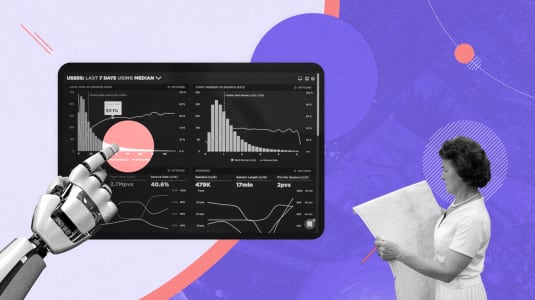Demonstrating Viability with Proof of Concept: An AI-Powered Chatbot Case Study
How can you make a real impact on your business with cutting-edge technology without spending a fortune? We recently assisted a client in understanding that they don’t need an R&D team to implement impactful innovations that save employee time. Their goal was clear but ambitious: simplify employees’ access to vast amounts of company data using AI. The goal was to develop a system that functioned like an exceptionally well-informed colleague, providing accurate information upon request in a hassle-free manner. Our proposed initial step was to create an AI chatbot Proof of Concept.

Table of contents
The background
One of our clients aimed to enhance their knowledge base, focusing on making it more accessible and less time-consuming for their employees. The company uses its own custom solution, while typical organizations depend on platforms like Confluence, Coda, or Notion for knowledge storage. Although these platforms are great, they encounter similar challenges, comparable to those experienced by our client’s solution:
- Knowledge is organized in static articles,
- Their search engines often lack accuracy and usefulness,
- Keeping pages up-to-date is a common challenge, resulting in limited access to the most current knowledge.
We tasked our AI Services team with assisting our client in addressing this challenge efficiently, without excessive expenditure of resources or time.
After consideration, the team opted to commence with a Proof of Concept (POC) solution. A Proof of Concept (POC) is a technique for assessing the feasibility of a digital product or feature idea. It tests whether the concept can be practically implemented, primarily addressing the question, ‘Can it function successfully?‘ The emphasis here is on technical feasibility rather than on aesthetics or the specifics of implementation.
Business Objectives
Client’s business imperative was clear: reduce the time employees spend searching for information. Often, large databases become unwieldy, and vital information gets buried under pages of data, much like the rarely visited second page of Google search results. Our AI-driven knowledge base aims to address this issue by providing immediate, relevant responses to queries.
Challenge: developing an AI-powered chatbot
Our team aimed to develop an AI-powered chatbot with access to a knowledge base, designed for easy implementation in any company. This solution was meant to simplify access to domain knowledge, particularly for new employees or those unfamiliar with specific areas of the company.
The primary challenge was integrating AI with existing client’s company data, often in varied formats, including PDFs. Another significant issue was enabling AI systems to understand context similarly to humans. While humans naturally understand and interpret context, LLM-based systems are still not very good at it. This required the AI systems to extract specific information from extensive data sets, analyzing vast amounts of text and accurately identifying relevant data.
Our task was to enable AI to think like a human — a challenge that is definitely easier said than done. We had to sift through extensive data and enable AI to extract precise information from this vast pool.
The solution involved structuring the data in a way that AI could understand. This meant not only connecting various data sources, like PDF files, but also providing clear context and descriptions. We used AI technologies to connect these data points, transforming them into a coherent, searchable knowledge base.
Implementation and Technologies
Our AI chatbot proof of concept can effectively access all critical information, such as meeting notes, project updates, and documents. This process is fully automated from a user’s perspective. At the heart of this system is an AI-powered chatbot. This chatbot is designed to comprehend queries and retrieve answers from the accumulated and most up-to-date data.
To construct this solution, we employed various technologies, including ChatGPT and OpenAI Assistant. In the early stages, we used app embedding systems to enhance AI’s comprehension of human language. As we progressed, we integrated the solution with graphical interfaces and server-side technologies, resulting in a more user-friendly and effective system. In addition to the AI-driven technical solution, we also incorporated the chat functionality into the product’s layout and user interface.
Results and Validation
The outcome was an AI solution with a high degree of accuracy in information retrieval. Our initial tests showed around 60% accuracy, but with refinements in architecture and approach, we achieved up to 98-99% accuracy. This was a significant milestone, proving the feasibility and reliability of our AI-driven knowledge base. This means that using a PoC method we were able to prove that making an AI-based knowledge base is doable. This is the first step to the implementation of the entire product.
Conclusion
Contrary to the conception that AI projects require large teams and extended timelines, our project was efficiently executed with a small team of two GenAI Engineers. Most of the time, only one software developer was working on the product, demonstrating that AI solutions can be developed rapidly and with fewer resources.
For businesses looking to optimize their operations or explore AI’s potential, our team at Boldare is equipped to turn those ideas into reality — starting from the initial PoC and going further, through other stages of product development.
Share this article:













